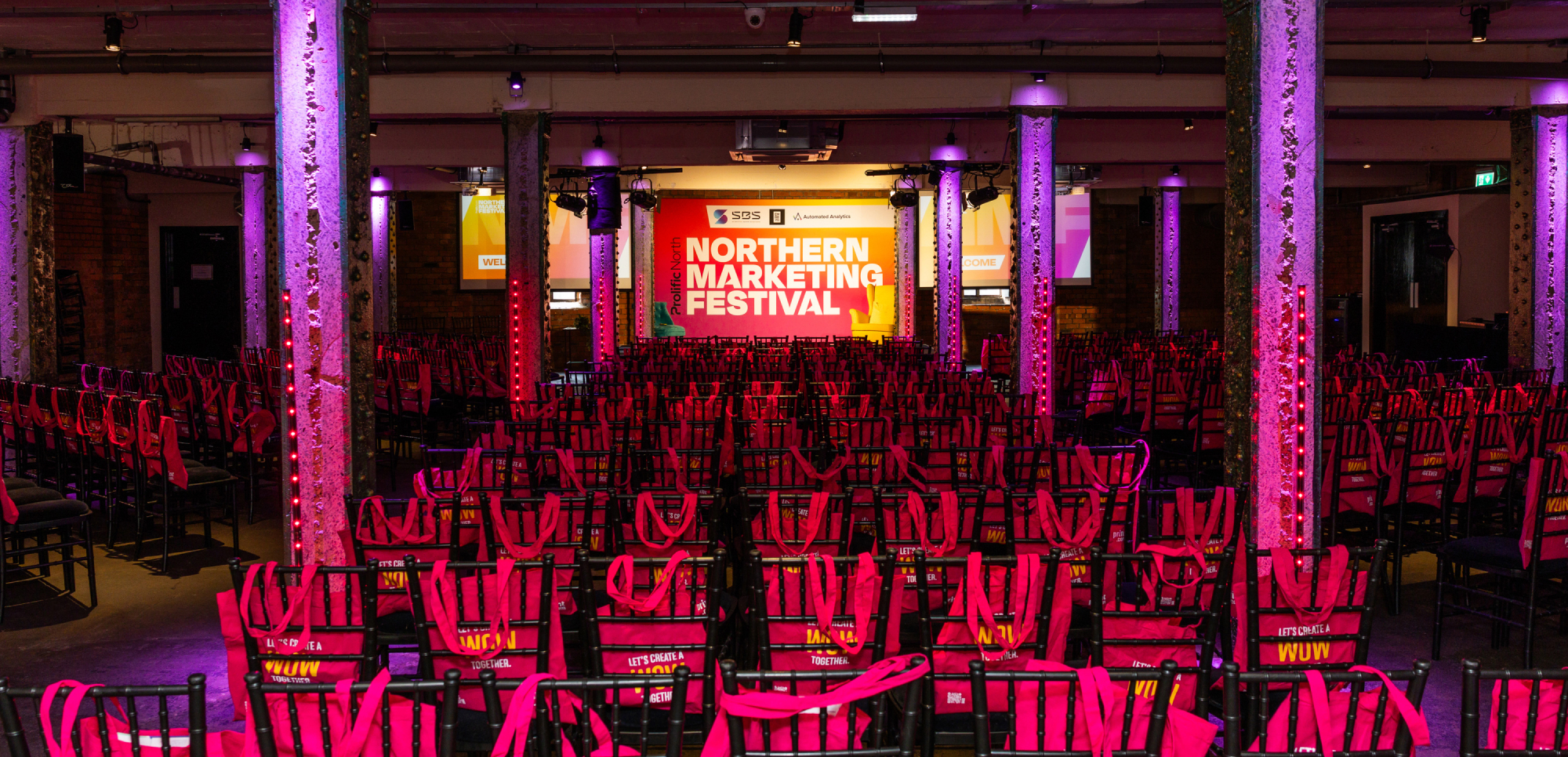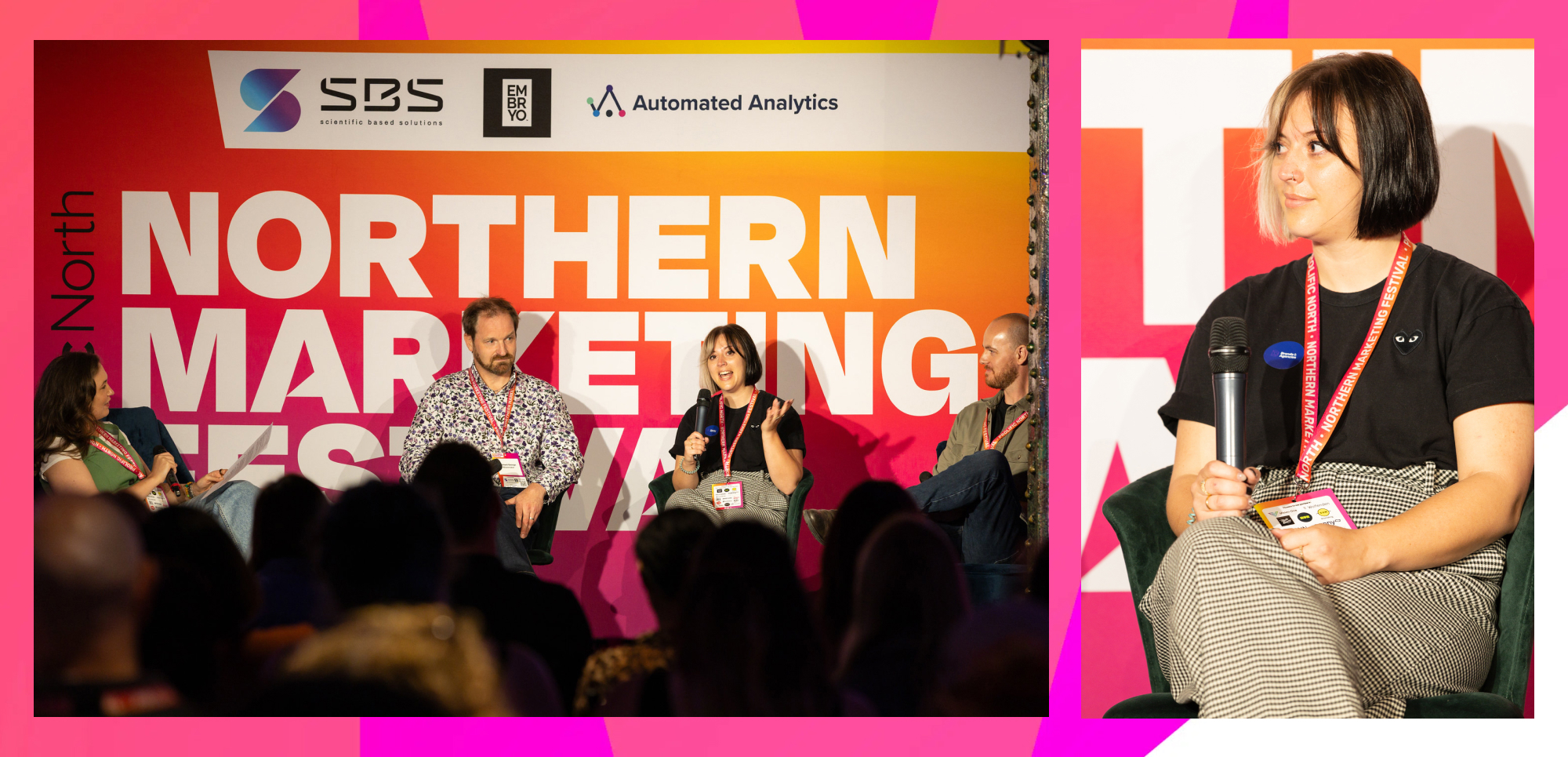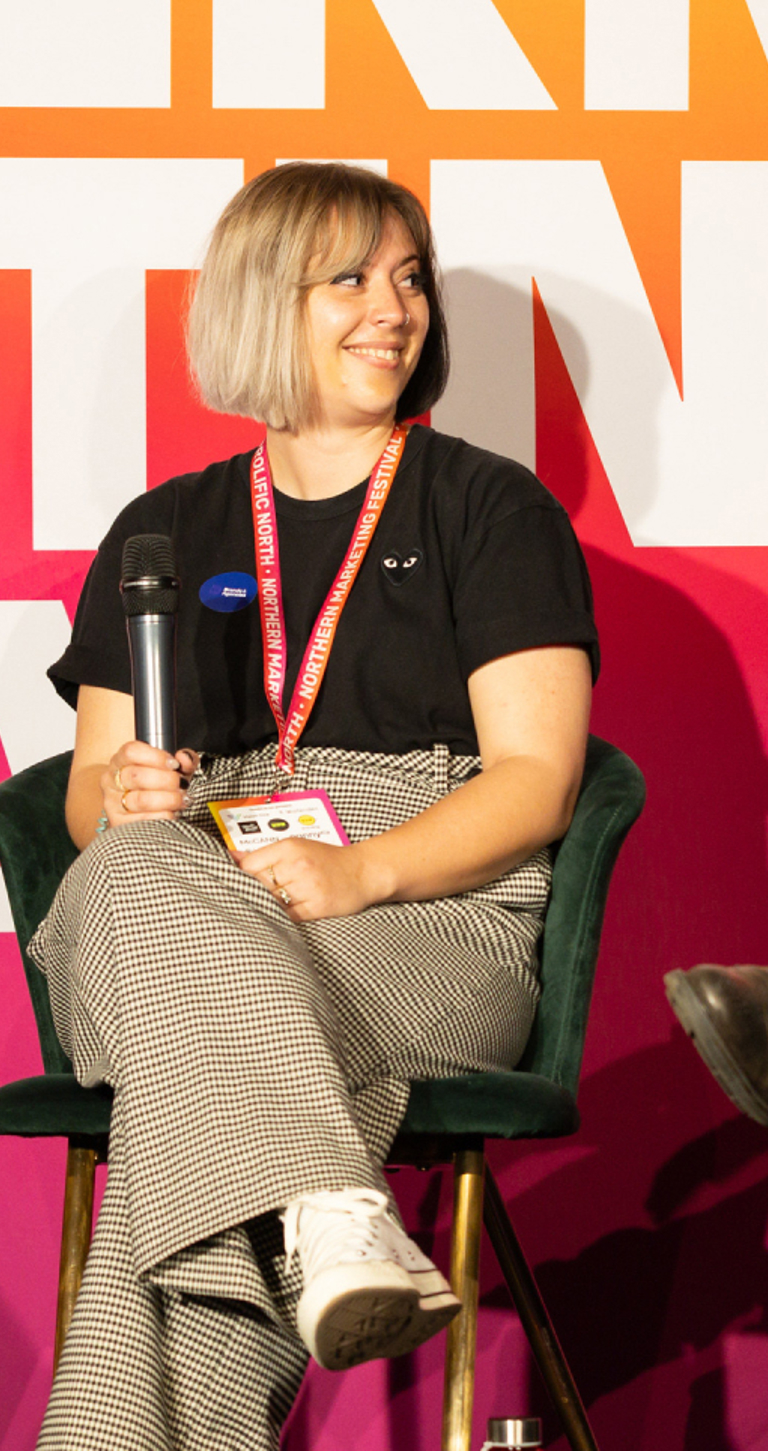My thoughts on holistic growth and what it means for brands, agencies and me!
For those that don’t know me, I’m a “behind the scenes” kind of person. I like to do my bit in the background, quietly, efficiently and without any fuss. I’m not comfortable on stage, speaking publicly or being in front of most audiences. I’m not without any confidence, and I certainly don’t lack opinions. It’s just that I am generally happy in a room between 2 to 10 people max if you want me to share my thoughts and ideas.
Perhaps you can relate?
That said, I’ve always admired my peers, friends and colleagues who take public speaking in their stride. It’s something I’ve always wanted to be better at. So, when Alexandra, Managing Director at Prolific North floated the idea of being a panellist at this year’s Northern Marketing Festival talking all things “holistic growth” a few things happened:
- My ears went hot, my stomach swirled, and my anxiety gave me a big fat reminder that it’s still thriving
- I felt grateful, flattered and lightly amazed that she thought I was good enough at what I do to be worth asking to join a Prolific North panel
- That northern grit kicked in when the voice in my head pointed out that this was a great opportunity as well as privilege, so basically quit deliberating and just do it
- And finally, my brain joined the party and noted that there was something rather harmonious about a speaking on the topic of holistic growth, when to do so, would be such a huge step forward in my own personal growth…
So, I said yes (otherwise this would be a very short story) and at 14:00 on Thursday 12th June, at Victoria Warehouse in Manchester, I took to the stage alongside Alexandra herself and my fellow panellists Nick and Richard to answer questions on “Holistic Growth: How to Integrate SEO, Content, and Creativity for Maximum Impact.
The goal of the session was to demonstrate for our audience not just that these disciplines should merge, but how, with practical examples to help bring that to life. Now, something else worth mentioning about me: I’m a planner. None of this “winging it” and “seeing what happens” way of life for me. I respect, admire and enjoy it in others, I just can’t function like that myself. I need a plan, and I am comfortable and happy with that. And the bonus for everyone still reading this… is it meant I had a handy little write up of all my answers to those questions ready to go.
So, if you couldn’t catch this year’s Northern Marketing Festival, here are my thoughts on “holistic growth” in the marketing industry today.

Holistic growth today mean’s winning meaningful space in both the hearts and minds of your audience.
The opening question of our panel: what does “holistic growth” truly mean for a brand today, and why is it no longer enough for vital marketing functions to operate in isolation? I thought at the time, and still do, that this is a great question.
When I was reflecting on it, I realised that, in hindsight, it's probably never been enough for core marketing functions to operate in isolation. But as they say, hindsight is 20/20.
For brands today, holistic growth really does mean growing as a whole. It’s not just about driving bottom-line metrics like conversions or revenue. It’s about increasing market share, improving brand equity, enhancing sentiment, and, crucially, understanding how all those metrics interrelate. When they work together, growth in one area can lift another.
If I had to sum it up in a single sentence: holistic growth means winning meaningful space in both the hearts and minds of your audience.
Win their hearts, and you get loyalty, advocacy, repeat purchases, higher average order values, glowing reviews, and word-of-mouth recommendations. Win their minds, and you earn market share, visibility, traffic, and conversions. When all those signals are trending positively together, that’s true holistic growth and it builds resilience into your brand and business.
Bellroy, FirstBus, MadeBrave: brands and agencies making holistic growth happen
The challenge then came on question two which asked for examples of where holistic growth has been achieved really well and honestly, I found this one surprisingly tricky to answer at first too. Maybe because once I started thinking about it, I got quite critical! But one great example that came to mind is from a brand close to my heart: Bellroy. (And if you value utility in your products, they’re a brilliant brand to check out.)
Bellroy consistently champions user-generated content on their socials, which has helped them build a truly engaged community, no small feat. But what’s impressive is how they’ve integrated that content across their marketing. They amplify it on their own channels, use it as social proof on their website to support purchase decisions, and by showing real people using their products in creative ways, they’ve even expanded their potential audience. Who knew a hanging washbag could double as a travelling stationery cupboard… until Bellroy shared a customer doing exactly that?
Another example, fresh from attending the Northern Marketing Festival in Leeds on the 11th June is the First Bus transformation by MadeBrave. It’s a fantastic example of integrated thinking in action, and I’d encourage people to go and learn more about it.
Question three turned the topic towards the pitfalls to avoid when brands and agencies are striving for holistic growth and for the first time, the answer came easily.
A big pitfall I see is focusing on delivering holistically, rather than thinking holistically.
In other words, just because you didn’t use every platform, channel, or tactic available to you doesn’t mean your strategy isn’t holistic, especially if you’ve made informed decisions about what should or shouldn’t be included.
I like to visualise it like this: imagine all the marketing channels as tools in a toolbox. Your challenge, your brief, is the mission. You don’t need to use every tool you’ve got to achieve it. Instead, rule tools in. Ask, “Is there a good reason to use this?” If yes, it goes in. If not, leave it out...
And this ties in closely with taking an audience-first approach.
Be where your audience actually is. If they’re on TikTok and you can reach them there effectively, great, TikTok goes in the mix. If they’re not, then don’t force it. The best brands stay flexible: if TikTok doesn’t belong today, that doesn’t mean it won’t tomorrow.
Moving onto question four, the conversation turned towards practical steps others can take to start fostering more holistic thinking in their own teams, whether that’s within an agency or in-house marketing department. In truth, it was hard to stick to just one, so in the end my answer is one idea with a few different ways to put it into practice. Not exactly what Alexandra asked for, but practical at least.
I think, one of the best ways to foster holistic thinking is to deliberating shift your anchor point when you’re working on a brief or solving a challenge.
Wherever you start from becomes your anchor. So, if you're a social media marketer, your instinct will be to solve everything through a social lens; that’s natural. Get those ideas down, absolutely. But then… change your anchor. Step out of your silo and look at the problem from a different perspective.
Here are a few fun, practical ways to do that, which I try and put into practice at Pixelbuilders:
- Bring together a mix of people from different disciplines and ideate together. I like to bring in two logical additions to an idea session and one wildcard. So for example, if we have a social media brief from a client, it is logical to have a social media expert in the meeting, and most likely a creative or designer, maybe even a paid social expert, but then, why not ask if a developer can spare the time to contribute or a member of your HR or office management teams? They’ll have completely different anchor points so they might just bring an idea to the table that sparks something great. We’re all more than our jobs too, so you never know what perspectives you might get.
- Before solving the problem, ask: “How could we make this worse?” first. It’s counterintuitive, but it surfaces angles you might miss otherwise.
- Try the "what would X do?" method. What would Disney do? What would Nike do? Look at it through a completely different industry or brand lens.
- And finally, and I know this is easier said than done, but ideate without limits. Forget budgets, tech constraints, timelines, client preferences (just for now) and enjoy the power and possibilities of simply asking “what if”.
And finally, with question number five, it was time to look to the future and answer how we see SEO, content, and creativity evolving in the next frontier of integrated marketing?

My answer: I think we’re moving from a doer’s economy to a thinker’s economy.
And in that shift, we need to bring back the value of the generalist mindset. Over the past few years, our industry has leaned heavily into deep specialisation; channel experts, platform specialists, and people working right on the cutting edge. That’s amazing, and we shouldn’t lose it. But we need to layer something over it: the ability to see the bigger picture.
To put it another way: we need more T-shaped people. Those with deep expertise in one area, but a strong understanding of the wider ecosystem, so they can collaborate and connect the dots.
This matters even more in the context of AI. It’s a bit of a dirty word, but AI is doing some of what we do. But I think we have time yet, before it can think, create, feel and imagine like we can. And if audiences are already starting to reject AI-generated content—something we’re seeing hints of, with the return of physical media and the desire for more “real” experiences, then I think the future isn’t less human. It’s more.
The future of SEO, content, and creativity lies in how we use our uniquely (for now) human capacity for thought, emotion, and imagination and how we work together to bring that to life.
So, to recap all of that:
- Holistic growth means winning meaningful space in both the hearts and minds of your audience.
- Avoid delivering holistically, focus on thinking holistically.
- Visualise marketing as a toolbox: don’t use every tool just because it’s there. Ask: "Is there a good reason to include this?".
- And usually, an audience-first strategy wins.
- Change your anchor. Try to see the problem from outside your usual lens. Cultivate a safe space for cross-functional curiosity. Frame exercises as play to unlock innovation.
- We’re shifting from a doer’s economy to a thinker’s economy. T-shaped people are key: deep in one area, but with a broad understanding of the whole.
- AI is changing execution, but human imagination still leads. The future isn’t less human, it’s more.
Other blogs you might like...

Why assuming positive intent is important right now

Umbraco: is it a CMS, is it a platform, is it an Ecosystem…


